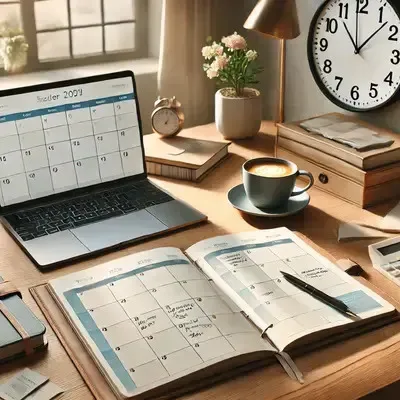
Secrets of Successful Day Planning for a Productive Life
In today’s fast-paced world, many struggle to stay productive and manage time effectively. Achieving a successful balance between work, personal life, and relaxation may seem difficult, but a well-structured day plan can make all the difference. This article reveals the essential steps to crafting an effective day plan, ensuring you maximize your productivity while maintaining a healthy balance.
Step 1: Prioritization
The first and most crucial step is identifying your priorities. Not every task has equal importance, and trying to accomplish everything at once can be overwhelming. Start by listing your daily tasks, then categorize them into three groups: high, medium, and low priority. Focus on completing the high-priority tasks early in the day when your energy and focus are at their peak. Medium-priority tasks can follow, and if there’s time left, tackle the low-priority ones. Knowing what’s most important will help you make informed decisions about where to invest your time and energy.
Step 2: Building a Morning Routine
How you start your day significantly impacts its overall success. Establish a morning routine that sets a positive tone and builds momentum. This routine could include activities like exercising, meditating, reading, or having a healthy breakfast. It doesn’t have to be extensive; even a 30-minute routine can help you feel grounded and ready for the day. Consistency is key—stick to your routine, and over time, you’ll notice a marked improvement in your focus and productivity.
Step 3: Divide Tasks into Blocks of Time
Rather than multitasking, which can dilute focus, try time-blocking. This involves allocating specific time slots for different tasks throughout the day. For example, designate an hour in the morning for creative work, another hour for emails, and so on. By dedicating focused time to each task, you’ll work more efficiently and avoid the temptation of distractions. Be realistic about how long each task will take and leave room for breaks to prevent burnout.

Step 4: Using Planning Tools
Technology can be a powerful ally in organizing your day. Whether you prefer traditional methods like a paper planner or modern tools like digital apps, find a system that works for you. Apps such as Google Calendar, Trello, or Todoist are excellent for setting reminders, scheduling tasks, and tracking progress. The right tools will not only help you stay organized but also provide a sense of accomplishment as you tick off completed tasks.
Step 5: Evaluate and Adjust the Plan Throughout the Day
No matter how well you plan, unexpected events and changes are inevitable. It’s important to stay flexible and adjust your plan as needed. At the end of the day, take a few minutes to review what you accomplished and reflect on any changes that could improve your future plans. This evaluation process ensures that you learn from each day, refining your strategies for better results over time.
Mastering the art of day planning is a continuous journey, but the rewards are well worth it. By prioritizing tasks, building a consistent routine, time-blocking, using planning tools, and evaluating your progress, you can dramatically enhance your productivity and lead a more balanced life. Start applying these steps today, and watch how your life transforms.
